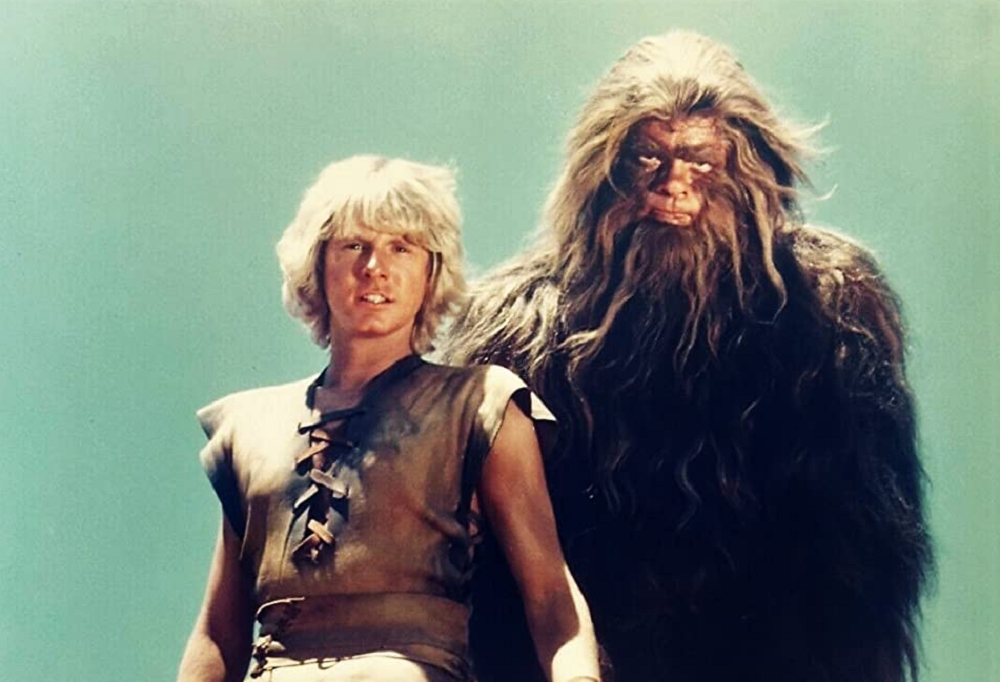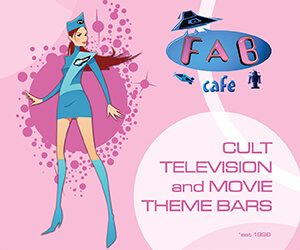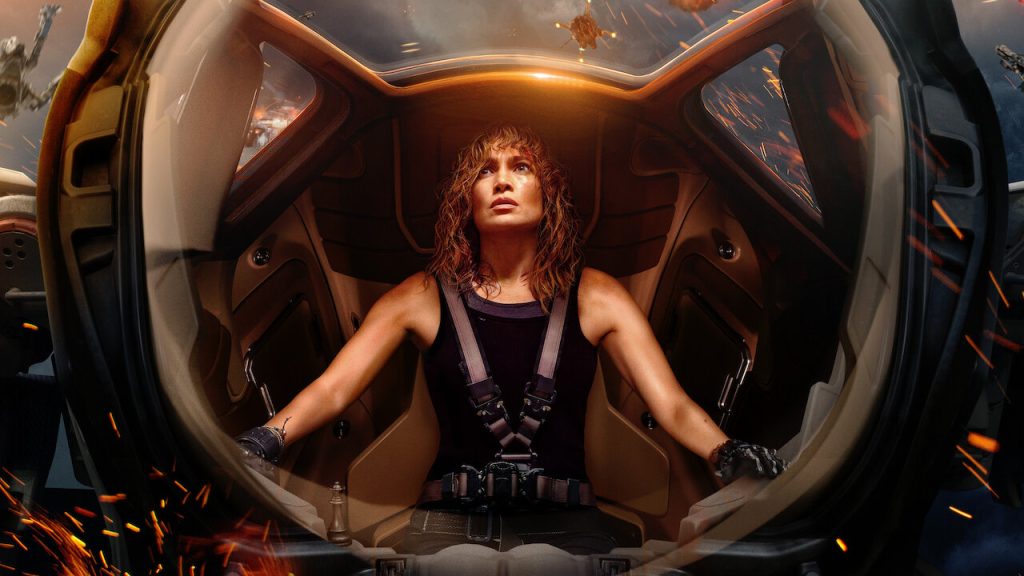Ah, telephemera… those shows whose stay with us was tantalisingly brief, snatched away before their time, and sometimes with good cause. They hit the schedules alongside established shows, hoping for a long run, but it’s not always to be, and for every Street Hawk there’s two Manimals. But here at STARBURST we celebrate their existence and mourn their departure, drilling down into the new season’s entertainment with equal opportunities square eyes… these are The Telephemera Years!
1978-79
The 1978-79 season was a time for goodbyes, with the final episodes of All in the Family, The Amazing Spider-Man, Good Times, Starsky & Hutch, Welcome Back Kotter, and Wonder Woman all making grown men cry. Still, ABC’s massive comedy line-up – they filled the top five slots in the ratings chart with their hit sitcoms – must have been some succour, with Mork & Mindy the number three show in its debut season.
Other new shows included Three’s Company spin-off The Ropers, a put-upon Judd Hirsch in Taxi, lessons in harmony with Diff’rent Strokes, and radio station fun with WKRP in Cincinnati. Fans of telefantasy were treated to The Dukes of Hazzard, BJ and the Bear, and space opera in Battlestar Galactica, alongside their regular doses of Charlie’s Angels and CHiPs. But those were the shows that adults watched in 1978 – what about the kids? This is the story of a 1978 Saturday morning…
Godzilla (NBC): You all know the story of Godzilla by now, right? Mankind’s stupidity and eagerness to destroy itself results in an ancient creature being awakened which cuts a swathe of radioactive revenge across a Japan only nine years removed from the atomic bomb atrocities in Hiroshima and Nagasaki, eventually becoming the Earth’s defender against similar creatures from outer space, even though we don’t deserve him?
The big green lizard starred in fifteen Japanese films from the Toho studio between 1954 and 1975 when the series was halted following lacklustre box office receipts for Terror of Mechagodzilla, and most of these films found an American audience in dubbed versions shown in fleapits, drive-ins, and on late night TV. The lull in Japanese action meant the US was ripe for homegrown Godzilla fare and Marvel Comics were first out of the blocks with a comic book in 1977 that eventually ran for twenty-four issues.

Marvel was not the only company preparing fresh Godzilla for the American market, though, and Joseph Barbera of the Hanna-Barbera animation studio thought the character perfect for his own animated show, tasking Duane Poole and Dick Robbins with coming up with a structure that could showcase the might of the creature while keeping the light peril necessary for such a show. Poole and Robbins created the crew of the research ship Calico, led by Captain Carl Majors and scientist Quinn Darien (Darien’s nephew Pete acted as the audience identification figure).
A typical story would find the Calico stumbling into the kind of dangerous situation that only the intervention of Godzilla could solve, his signature tune ringing out as he emerged from the depths to save the day. Thirteen episodes of the show were ordered, partnered with Jana of the Jungle as The Godzilla Power Hour from September 9th 1978, ultimately leading to a second season which featured the horror that was Godzooky. Toho resumed making Godzilla films in 1985 and there have been several big-screen blockbusters starring the fire-breathing behemoth but for a generation of kids, there’s only one song they hear when they think of Godzilla…
Jana of the Jungle (NBC): The other half of The Godzilla Power Hour was developed by Johnny Quest creator Doug Wildey but you didn’t have to look too far to discover Wildey’s inspiration for the show. Essentially a female Tarzan, Jana (BJ Ward in her first role) was rescued from a boating accident as a small child by Montaro, the last survivor of an ancient tribe who schools Jana in the way of his people (voiced by The Addams Family’s Lurch, Ted Cassidy).
Jana’s father was lost in the same accident, and she spends her time searching for him with the help of Dr Ben Cooper, a young wildlife scientist who took over her father’s reservation, and her animal friends, the white jaguar Ghost and comedy opossum Tico. As if this wasn’t enough, Jana also has to rescue miners from an exploding volcano, fight off poachers described as a film crew, avoid a war between the wolves and the pumas, and save Ben from a tribe of enormous women.

Jana was paired with Godzilla for the first two months of the season, thereafter welcoming re-runs of Johnny Quest to what became The Godzilla Super 90. In September 1979, Godzilla went it alone as Jana didn’t get the second season that may have eventually saw her find her father. As it was, the story ended without a denouement, meaning Jana is still out there somewhere searching for him, although she’d be in her sixties by now.
Interestingly, in 2007 a comic book called Jungle Girl was published by Dynamite Entertainment, created by Frank Cho and Doug Murray. Its protagonist was a young blonde woman named Jana, living in some kind of lost jungle world, but its creators maintain that is pure coincidence. Cho and Murray produced three series of Jungle Girl, which saw Jana up to the same kind of hijinks she enjoyed in the Hanna-Barbera series. It may not be cannon but it’ll do.
Bigfoot and Wildboy (ABC): The 1970s was a big time for Bigfoot. On the heels of the Patterson-Gimlin film of 1967, the hairy hominid was thrust into the public consciousness, with the 1970 film Bigfoot sensationalising the creature and leading to The Beat of Boggy Creek, Shriek of the Mutilated, and half a dozen more low-budget flicks. The real breakthrough, though, came when Andre the Giant portrayed the beast on a special two-part episode of The Six Million Dollar Man in February 1976. Even though the Bigfoot turned out to be – spoilers! – an alien robot, kids all over the world now added the missing link to their playground roll call.
That Bigfoot was now kid’s fodder was perfect for Sid and Marty Krofft. Since HR Pufnstuf in 1969, the brothers had made furry creatures their stock in trade and were given an hour-long showcase – The Krofft Supershow – in 1976 to bring more of their creations to the air. Working with Joe Ruby and Ken Spears, the Supershow featured three serials featuring Krofft creations – Dr Shrinker, Electra Woman and Dyna Girl, and Wonderbug – and when it returned for a second season in 1977, Electra Woman was replaced by a new story.

Bigfoot and Wildboy starred Joseph Butcher as Wildboy, an orphan lost in the wilderness and raised by Ray Young’s Bigfoot. Neither actor was new to the business, but this was the first starring role for both men (and really as good as it got for Butcher, who did just one episode of Knots Landing in 1980 before retiring from acting at just twenty-nine. The Krofft Supershow finished up in September 1978 but Bigfoot and Wildboy lived on, a second series of twelve-episodes given its own slot in June 1979.
Between them, the wild pair managed to see off evil tribes, sinister professors, a mummy, a vampire, and an evil bigfoot, all the while keeping an eye out for archaeology student Cindy who managed to stumble into more than her fair share of trouble. Along with The Krofft Superstar Hour’s Horror Hotel and The Lost Island, Bigfoot and Wildboy was the end of a run of Sid and Marty Krofft shows that became a staple of children’s programming throughout the 1970s. It was somehow fitting that their final show was about someone from an older world trying to guide the youth through a strange new one.
Yogi’s Space Race (NBC): Smarter than the average bruin, Yogi Bear made his debut in 1958 as part of Hanna-Barbera’s The Huckleberry Hound Show, graduating to his own show in 1961. The Yogi Bear Show ran for just thirty-three episodes which were then repeated in perpetuity, even after Yogi Bear and Friends arrived for a ninety-six-episode run in 1967. By 1973, even these 129 episodes were beginning to get stale in re-runs and so a new Yogi Bear show was commissioned, adding fifteen episodes of Yogi’s Gang to the mix.
The third Yogi Bear show – 1978’s Yogi’s Space Race – was a reworking of Wacky Races, with the various competitors replaced by familiar Hanna-Barbera characters and the setting shifted to outer space and alien planets, its logo parodying the then-current Star Wars. Huckleberry Hound, Jabberjaw, and Yogi – who had led a team in 1977’s Laff-A-Lympics, H-B’s previous all-star sports show – were the main racers, with guest appearances from Fred Flintstone, Quick Draw McGraw, Grape Ape, and others.

Alongside Space Race were three other features, expanding the show to ninety minutes. The first – Galaxy Goof-Ups – featured Yogi, Huckleberry Hound, and others as space patrolmen, Keystone Kopping their way to hilarity and disco dancing, and was eventually spun off into its own show after two months. It was very much part of the main event with Space Race, whereas The Buford Files – which starred a sleepy bloodhound who solved crimes with a pair of teens – and The Galloping Ghost – the spirit of an old miner looks after two teenage girls at a dude ranch – were the supporting acts.
After Galaxy Goof-Ups got its own show, Yogi’s Space Race was reduced to sixty minutes, becoming a half-hour show on its own in February 1979 when the other two segments were combined into their own standalone feature. Just thirteen episodes of each serial were made, again repeated liberally over the next few decades and, thanks to Cartoon Network, into the twenty-first century. Yogi had to wait until 1985’s Yogi’s Treasure Hunt for his next headline slot but that Top Cat inspired madness can wait for another day.
The New Fantastic Four (NBC): For two worlds so perfectly made for one another, the story of animated shows based on Marvel Comics characters took an awfully long time to get going. The barely-animated The Marvel Super Heroes show of 1966 was quickly followed by much better attempts at bringing Spider-Man and Fantastic Four to the screen, the former by nascent genius Ralph Bakshi.
The Fantastic Four show of 1967 was a Hanna-Barbera creation and largely succeeded in bringing the spirit of the Jack Kirby and Stan Lee comics to life on the screen. It should have been the start of a whole slew of Marvel cartoons but – while fans of rivals DC enjoyed seeing animated and live-action versions of Captain Marvel and the Super Friends – it was 1978 before Saturday mornings were graced once more by the House of Ideas. Once again, it was the Fantastic Four we got, but this was a very different Fantastic Four from that seen in the original cartoon or the pages of Marvel Comics.

Although the Fantastic Four had members outside its core quartet, it would be a brave man who developed a TV show without even one of them. This is what DePatie-Freleng were forced to do, however, when the rights for the Human Torch were tied up in a separate deal for a movie with Universal (that never got made). Understandable, then, that they would seek to replace the Torch with another member, even if the schoolyard talk was of fears that kids might imitate and immolate if he were featured.
Perhaps proving that Kirby was the ideas man all along, Lee pitched a cute robot as the new fourth member and Dave Cockrum was set to work creating its design. Famously, Cockrum hated the idea so much he walked off the job and was replaced by Kirby, back at Marvel after a spell with DC in the early 1970s, completing what would prove to be his final job for the company. The robot – H.E.R.B.I.E., backronymed to stand for Humanoid Experimental Robot B-Type Integrated Electronics – took his place alongside Mr Fantastic, The Invisible Girl, and The Thing, helping them see off the likes of Dr Doom, Magneto, The Mole Man, and The Skrulls but couldn’t prevent the show being cancelled after just one season.
Next on The Telephemera Years: Set the controls for 2006 where hedonism and pain await!
Check out our other Telephemera articles:
The Telephemera Years: 1966 (part 1, 2, 3, 4)
The Telephemera Years: 1968 (part 1, 2, 3, 4)
The Telephemera Years: 1969 (part 1, 2, 3, 4)
The Telephemera Years: 1971 (part 1, 2, 3, 4)
The Telephemera Years: 1973 (part 1, 2, 3, 4)
The Telephemera Years: 1975 (part 1, 2, 3, 4)
The Telephemera Years: 1977 (part 1, 2, 3, 4)
The Telephemera Years: 1978 (part 1, 2, 3)
The Telephemera Years: 1980 (part 1, 2, 3, 4)
The Telephemera Years: 1982 (part 1, 2, 3, 4)
The Telephemera Years: 1984 (part 1, 2, 3, 4)
The Telephemera Years: 1986 (part 1, 2, 3, 4)
The Telephemera Years: 1987 (part 1, 2, 3, 4)
The Telephemera Years: 1989 (part 1, 2, 3, 4)
The Telephemera Years: 1990 (part 1, 2, 3, 4)
The Telephemera Years: 1992 (part 1, 2, 3, 4)
The Telephemera Years: 1995 (part 1, 2, 3, 4)
The Telephemera Years: 1997 (part 1, 2, 3, 4)
The Telephemera Years: 2000 (part 1, 2, 3, 4)
The Telephemera Years: 2003 (part 1, 2, 3, 4)
The Telephemera Years: 2005 (part 1, 2, 3, 4)
The Telephemera Years: 2008 (part 1, 2, 3, 4)
Titans of Telephemera: Irwin Allen
Titans of Telephemera: Stephen J Cannell (part 1, 2, 3, 4)
Titans of Telephemera: DIC (part 1, 2)
Titans of Telephemera: Hanna-Barbera (part 1, 2, 3, 4, 5)
Titans of Telephemera: Kenneth Johnson
Titans of Telephemera: Sid & Marty Krofft
Titans of Telephemera: Glen A Larson (part 1, 2, 3, 4)








